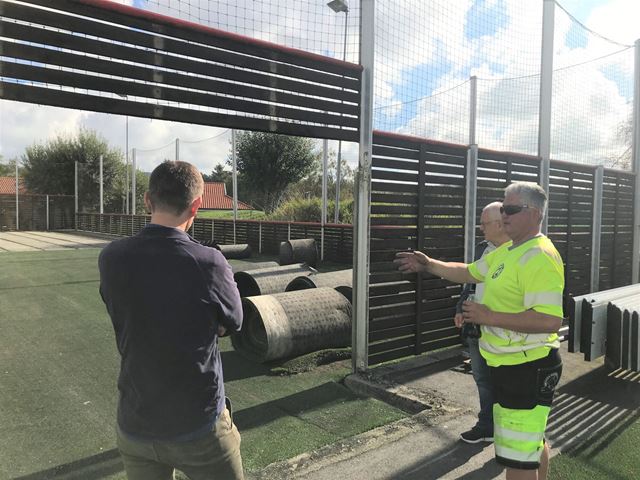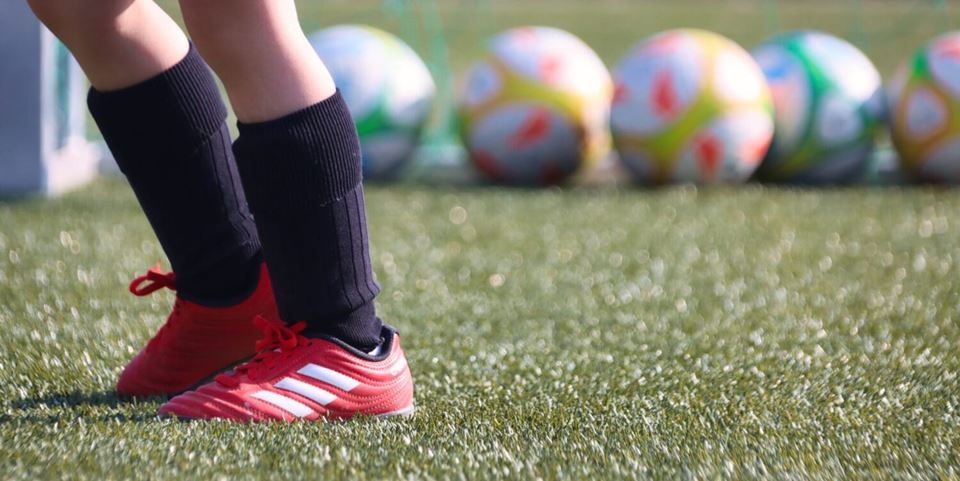“Today, all artificial turf ends up in the environment, either in the form of greenhouse gases or microplastic”, says SINTEF researcher Ross Wakelin.
But could it be possible to make redundant artificial turf into something useful instead? Together with the company Green Recycling in Rogaland, SINTEF has launched a project looking into technologies that can turn low quality plastic from artificial turf and other waste into reusable materials. Such a process is key to what we call the ‘circular economy’.
One idea is to convert the artificial turf into chemicals that can be used to manufacture new plastic products. This will help to reduce greenhouse gas emissions and extend the lifetime of the fossil resource.
Why not simply ban artificial turf?
It has been suggested from time to time that artificial turf should be banned in Norway. One alternative is to use gravel pitches, but these do not allow players to develop the same level of skills as they would on turf. Footballs move differently on gravel than on turf and sliding tackles would be practically impossible.
“An easy solution would be to ban the use of artificial turf, but this generates other impacts that have to be taken into consideration”, explains Wakelin. “The Norwegian climate makes the maintenance of resilient natural grass pitches very difficult, and these also generate emissions and have negative impacts on the environment”, he says.
“In Norway, access to all-weather sports facilities is key to providing children with opportunities for physical activity, and is essential to team sports”, says Wakelin This is a public health issue”, he adds.
Deposit-return system for artificial turf?
Ross Wakelin has a number of ideas, based on circular economy principles, that may be able to reduce the amount of artificial turf that ends up polluting the environment.
“The release of artificial turf components into the environment, such as rubber crumb granules, is linked to underestimates of the value of artificial turf”, he says.
Wakelin believes that we have to acknowledge the real value of this material. We simply have to increase the economic incentives not to discard all the components in artificial turf pitches, but to recycle them as the basis for new products.
“The deposit-return system employed for plastic bottles is a good example of what happens when waste is valued as a resource”, says Wakelin “In countries that have no such systems, it is still common to see plastic bottles kicking around in the towns and cities and polluting the natural environment”, he says.
But environmental protection measures, waste reception centres and deposit-return systems are just the start. We still have to find a way of ‘converting’ plastic waste into useful products.

“Used and often worn-out artificial turf pitches are strewn with rubber crumb and other small plastic particles. Our aim is to ensure that this material doesn’t find its way into the natural environment”, says Fredrik Skurve (right) at Green Recycling. Photo: Green Recycling
We are ‘super-consumers’
If we continue to consume and discard our resources at the rate we are today, we will need more than two planets by 2050. This is the unmistakable prognosis issued by the EU Commission in its document ‘Roadmap for a Resource-Efficient Europe’.
This is why we cannot continue to ignore the fact that the resources available to us today are not inexhaustible.
“The problem is not confined to the tiny particles contaminating the natural world, dumping, environmental damage and poor waste management”, says Project Manager Daniela Lima at Green Recycling. “As humans, we are currently consuming resources as if there was no tomorrow. Combustion facilities are often the final destination for artificial turf, but then new resources have to be found to make new pitches”, she says.
“We launched this project with SINTEF with the aim of finding a sustainable and circular solution for managing redundant artificial turf”, says Lima. “We believe that economic growth can take place without over-exploiting the planet’s resources and negatively impacting on the environment”, she says.



